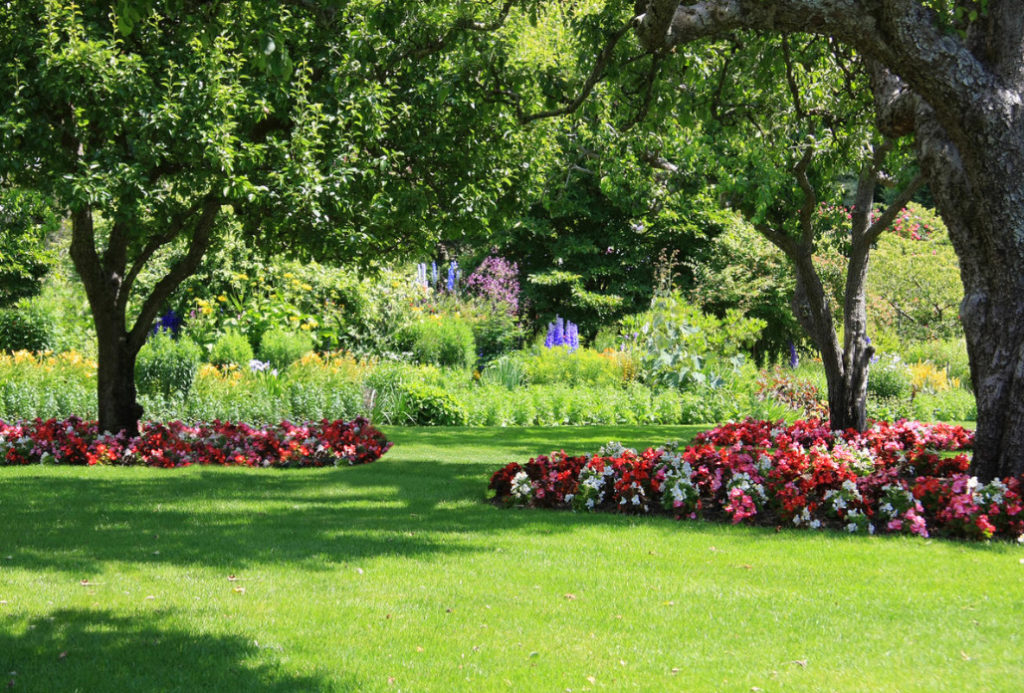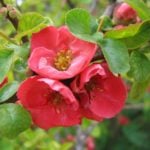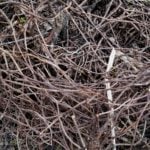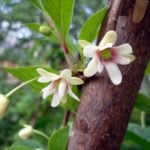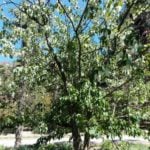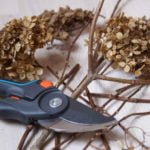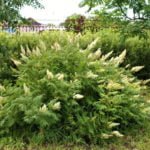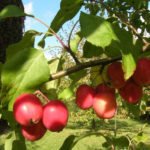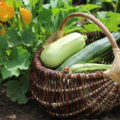How to arrange the trunk circles of trees is a question that haunts many gardeners. There are a lot of recommendations, but they are sometimes mutually exclusive — what to choose, how not to make a mistake?
If it were only a matter of aesthetic preferences, you wouldn’t have to bother: in the end, everyone’s tastes are different, and therefore everyone is free to choose what he himself considers beautiful for his garden. But this question also has a practical side, because fruit trees (and we are usually talking about them) need systematic care, and here the chosen method of decorating the trunk circle can play a role.
Let’s look at different solutions to this problem from both points of view — both aesthetic and practical. We will note the pros and cons of each option, and then everyone will decide for himself what is preferable for him.
Black steam
To put it simply — loose excavated soil, cleared of weeds and other vegetation. Usually this option is recommended for young plantings, and there is a logic here: while the tree is young, for it any plant is a competitor that takes away nutrition and moisture.
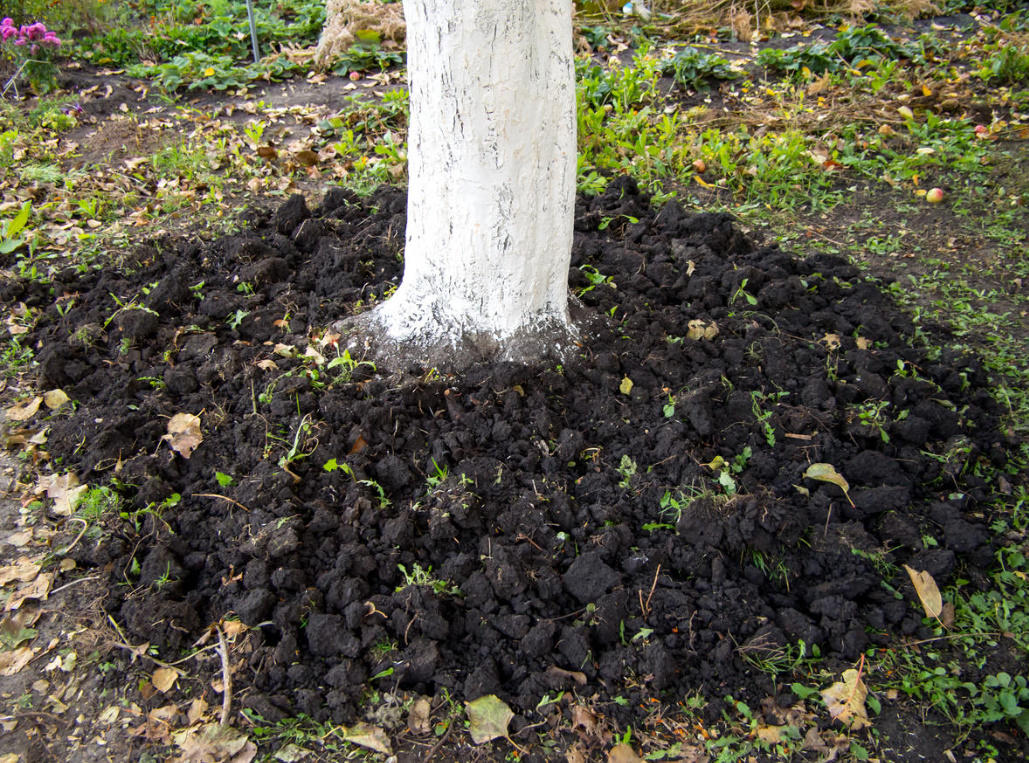
On the other hand, it is very difficult to keep such trunk circles in order: weeds do not sleep, they will sprout on loose fertile soil regularly, which means that you will have to do weeding all summer not only in beds and flower beds, but also in the garden. Not everyone can do it.
This technology is often used in industrial gardens, so agronomists confidently recommend this method as proven and comfortable for trees. But in amateur gardens, it does not particularly take root, because it requires time-consuming care.
Mulching
But this solution was to the taste of many summer residents. On the one hand, there are all the advantages of black steam: the trunk circle is free of competing plants, the soil under the mulch is loose. On the other hand, there is much less hassle: mulch can both retain moisture in the soil and suppress weeds.
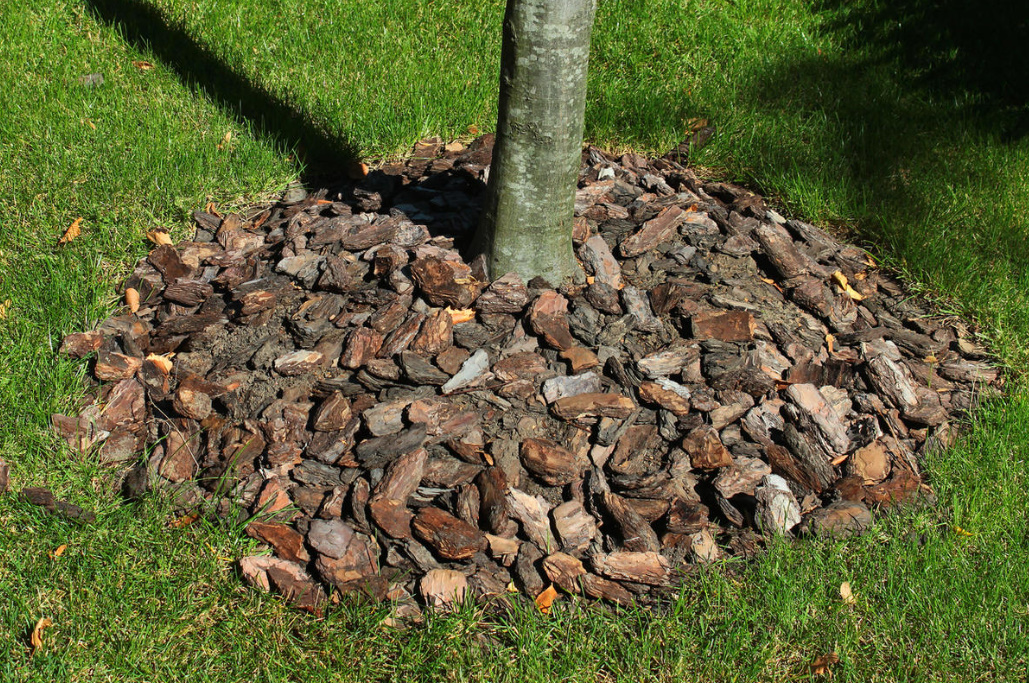
How to mulch? Here, as they say, who knows what. The simplest option is mown grass: cheap and angry. The grass will ripen — the tree will have additional nutrition. But persistent weeds through such mulch are quite capable of breaking through, this should be taken into account. In addition, many gardeners complain that ants like to settle in organic mulch, and in winter it can become a shelter for insect pests and mice.
Lovers of aesthetics use decorative materials — for example, wood chips or bark. It looks beautiful and neat, but you need to understand that you will have to carefully take care of such a trunk circle: remove fallen foliage (and it will not be so easy to rake it from decorative dusting), pour mulch, weed. Often, all the beauty is preserved for a year or two at most – then weeds begin to sprout from the seeds brought by the wind, and everything needs to be redone.
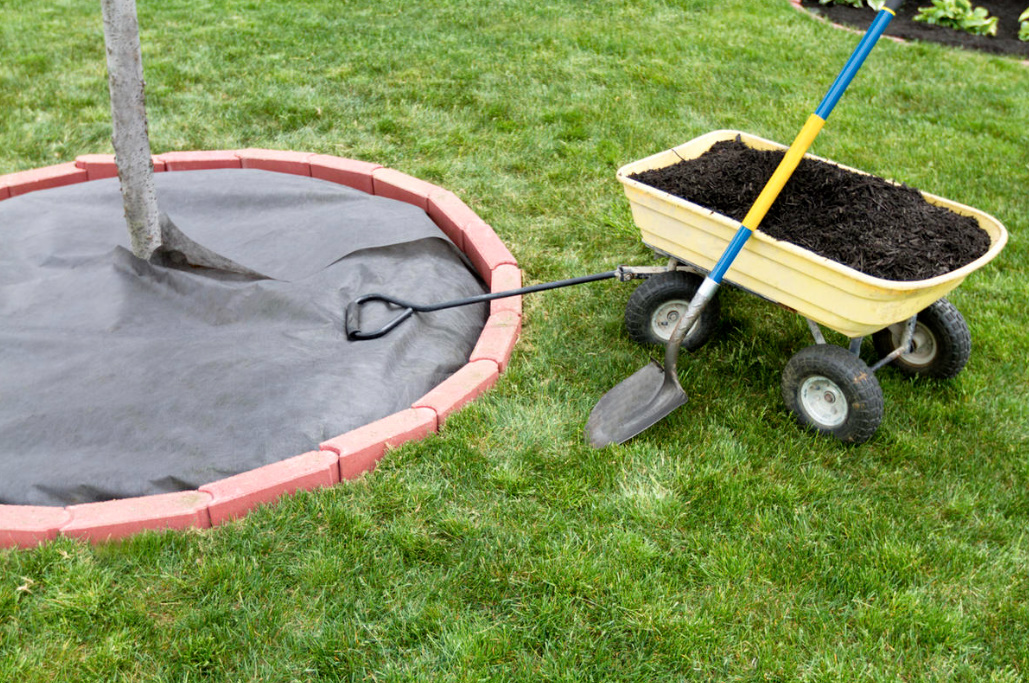
Slightly simplifies the care of geotextiles laid under mulch. At least it will protect against perennial rhizomatous weeds for a while. But even this remedy will not help from one—year-olds – they quietly take root directly on non-woven material. In a word, mulch — it can be beautiful, but not always practical.
Tinning (blackening)
A very practical option: the entire space under the trees in the garden is covered with grass, which is regularly mowed. Moreover, it is not at all necessary to sow special lawn cereals — ordinary wild plants will give the effect no worse: with systematic mowing, the vegetation is leveled, a very neat and unpretentious “wild” lawn turns out. If you want more beauty, use groundcover plants.
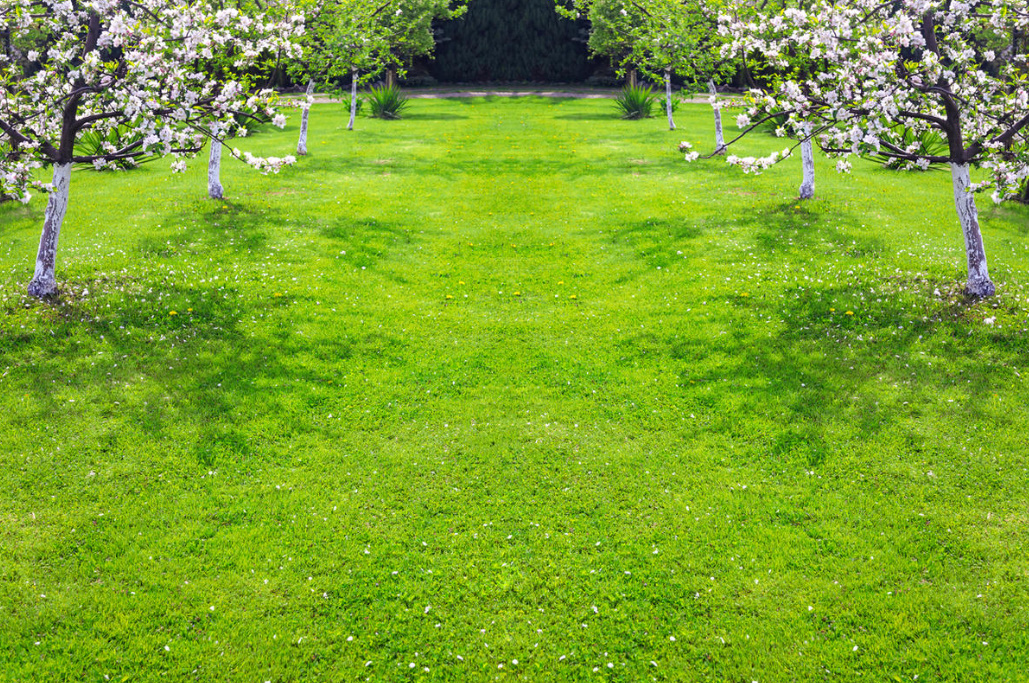
In an adult garden, difficulties with this approach can only be with fertilizing: it will not work to plant fertilizers in the soil. In such a case, it is recommended either to make a groove along the entire circumference of the trunk circle, or to use vertical “mini-wells” to deliver fertilizers and moisture to the roots of the tree.
It is more difficult with young plantings. Firstly, there is a risk of damaging the bark when mowing grass, and in order to exclude it, you will have to remove weeds manually directly near the tree. Secondly, not all seedlings feel well in tinned areas — sometimes gardeners note that such plants develop poorly, lag behind in growth. Here the issue must be solved individually — depending on local conditions and the characteristics of the seedlings themselves.
Decorative plantings
Flowers under trees are an attractive idea that many summer residents willingly use. Agronomists, in principle, do not particularly mind if the basic rules of such plantings are observed:
- plants should be low, with a compact, shallow root system;
- you should not plant anything close to the trunk of a tree;
- it is not recommended to use crops that are demanding of nutrition and moisture, so as not to create competition.
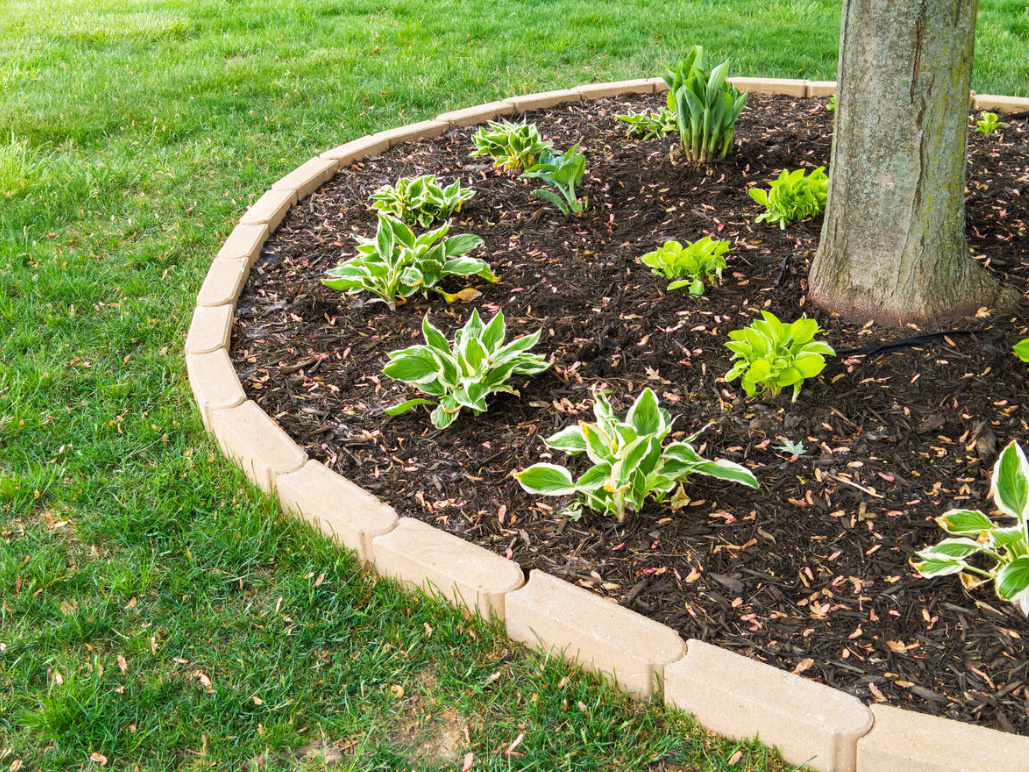
Additional bonuses: the use of flowering plants attracts bees to the garden, and some crops also heal the soil, and help to fight pests. If, instead of flowers, shade-tolerant vegetables or greens are planted under trees, you can also save space (this is very important in small areas).
On the other hand, everything is not smooth here either. For example, you need to prune in the spring — and there is a flowerbed under the tree: you will not approach the trunk, nor will you really put a stepladder. When harvesting, you will also have to look at your feet more often, so as not to step on the flowers inadvertently.
Personally, I didn’t really like this option from a practical point of view. Of course, it looks beautiful, but the convenience is questionable. However, this is an exclusively subjective view — I know that many people liked the flowerbeds under the trees.
Framing of trunk circles
Finally, one more question that cannot be ignored: how to frame the barrel circles (and whether it should be done at all).
Framing is necessary if decorative mulch is used. This facilitates the mowing of grass around the trunk circle and prevents the “spreading” of the mulching layer. Well, in general, fencing helps to keep clear boundaries, so it should be used if the strictness of lines in garden design is important to you. The rest is a matter of taste and personal preferences.
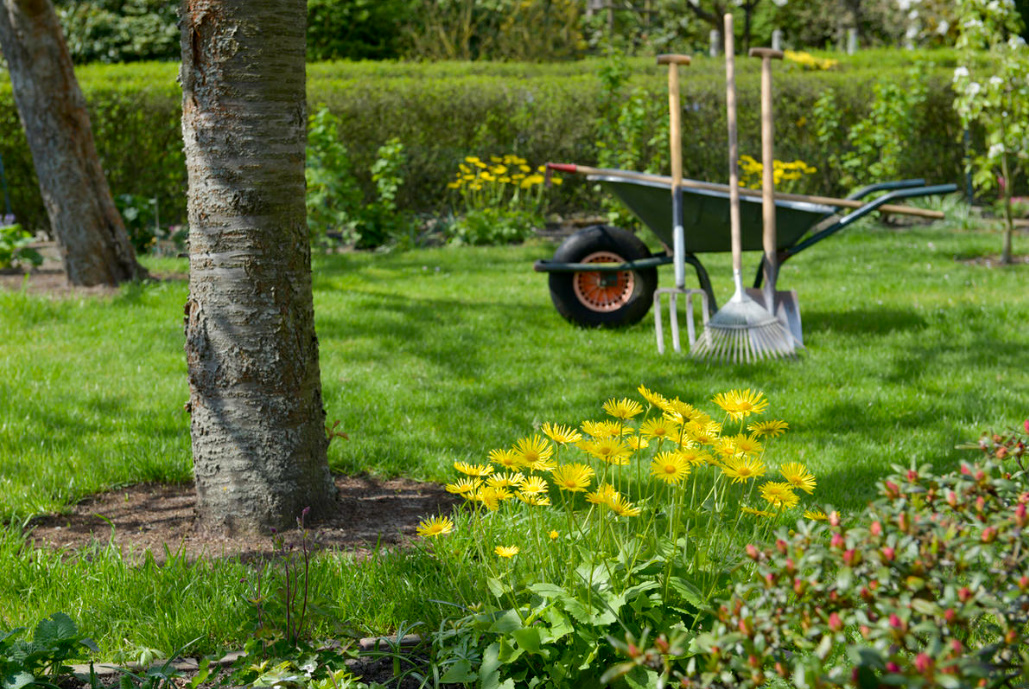
What to frame? In my opinion, the most practical option is a curb tape (only you need to choose a dense one that is resistant to atmospheric influences and mechanical damage — for example, from a trimmer line).
Gardeners often use stones or bricks, use special curbs (made of concrete or simpler — plastic). Choosing your own option (and in general, when deciding on the need for such a frame), be sure to think about convenience. And as for the aesthetic side — they don’t argue about tastes, do they?..
Tell us how the trunk circles are decorated in your garden! Which option did you consider the most correct for yourself and why?
